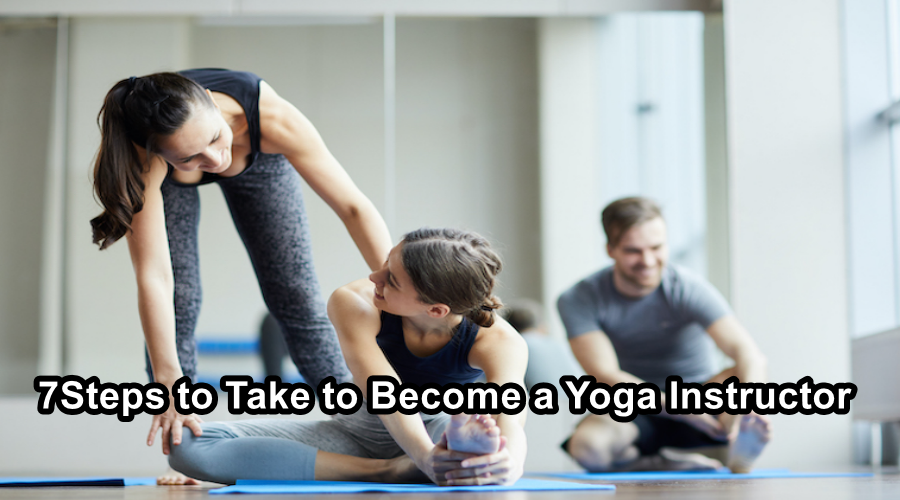Becoming a yoga teacher is a rewarding endeavor that allows you to share your enthusiasm for mindfulness, physical health, and spiritual development with others. It is a path that empowers you not only to deepen your own yoga practice but also to guide students on their own yoga journeys.
If you’re pursuing a career as a trainer and pondering, “Is NASM better than ISSA?” you may find yoga instruction certification to be an excellent complement. Regardless of your path, the following seven stages will help you begin your journey to becoming a certified yoga instructor.
1) Establish your individual practice
Before you can effectively instruct others in yoga, you must establish a solid personal practice. Devote time each day to practicing Hatha and Vinyasa yoga in order to enhance your understanding of poses, breathing techniques, and meditation.
The key to success is consistency; consistent practice not only improves your physical flexibility and strength but also strengthens your spiritual connection. Exploring various techniques will assist you in discovering your proclivities and areas of expertise, thereby shaping the type of yoga instructor you aspire to become.
2) Select a Yoga Teacher Certification Program
Choosing the proper yoga teacher training (YTT) program is crucial to your growth as a teacher. Consider accredited programs that match your values, objectives, and schedule. Typically, a comprehensive YTT curriculum encompasses yoga philosophy, anatomy, teaching methodology, and practical practice.
Numerous programs offer specialized courses, such as prenatal yoga or therapeutic yoga, so that you can modify your training to suit your specific interests. Not only will enrolling in a YTT program deepen your understanding of yoga, but it will also introduce you to a community of practitioners who share your passion.
3) Submerge yourself in education
A well-rounded yoga instructor values ongoing education. Beyond your YTT program, expand your knowledge with literature, seminars, and online courses. Explore the science behind asanas and meditation, study ancient yogic texts such as the Yoga Sutras, and familiarize yourself with the various schools of yoga.
By increasing your knowledge of yoga’s history, philosophy, and benefits, you will be able to provide thoughtful responses to students’ inquiries and guide their holistic well-being.
4) Engage in teaching practice and gain experience
Teaching experience is necessary for developing your abilities as a yoga educator. Begin by instructing your peers, family, or small groups in order to gain confidence and constructive feedback. To obtain practical experience, volunteer at local community centers, gyms, or wellness studios.
Every session you teach affords you the chance to refine your sequencing, cueing, and adjustments. Peer, mentor, and student feedback enable you to adapt and develop as a teacher, ultimately improving the content of your classes.
5) Acquire Accreditation and Specialization
After completing yoga teacher training and acquiring practical experience, it is time to get certified. Upon successful completion of the curriculum, you will receive a Yoga Alliance or other recognized certification. You can choose to specialize in a specific area, such as restorative yoga, yoga for athletes, or mindfulness meditation, once you have obtained certification.
Specialization enhances your expertise and attracts a particular audience in search of your unique skills. In addition, participating in seminars and advanced training programs can help you refine your teaching skills and introduce innovation into your classrooms.
6) Nurture effective communication skills
As a yoga instructor, you must be able to communicate precisely and compassionately. Learn to use your voice, body language, and cues to safely and mindfully guide students through their practice. Recognize that pupils’ levels of experience and physical abilities vary.
Adapt your instructions to accommodate a variety of learning styles, and be prepared to offer modifications or additional challenges as necessary. Developing strong communication skills encourages students to feel secure in investigating their practice and asking questions by fostering a supportive and inclusive classroom environment.
7) Establish an online presence
As a yoga instructor in the digital era, an online presence can significantly expand your reach. Create a website or blog that highlights your expertise, class schedules, and teaching philosophy. Use social media platforms such as Instagram and YouTube to share yoga tutorials, recommendations, and advice.
Online classes and seminars enable you to communicate with students all over the world, and platforms such as Zoom make it simple to conduct virtual sessions. Establishing a solid online presence enables you to communicate with a larger audience and establish authority outside of the classroom.
A Guide to Light Through Experience
This voyage is about becoming a beacon of positivity, mindfulness, and transformation, as well as an instructor. You have the ability to influence lives, foster well-being, and inspire meaningful change with each class you teach.
Embrace the path with an open heart and a committed spirit, and you will not only influence the lives of your pupils, but you will also undergo your own personal evolution as a yoga teacher.



